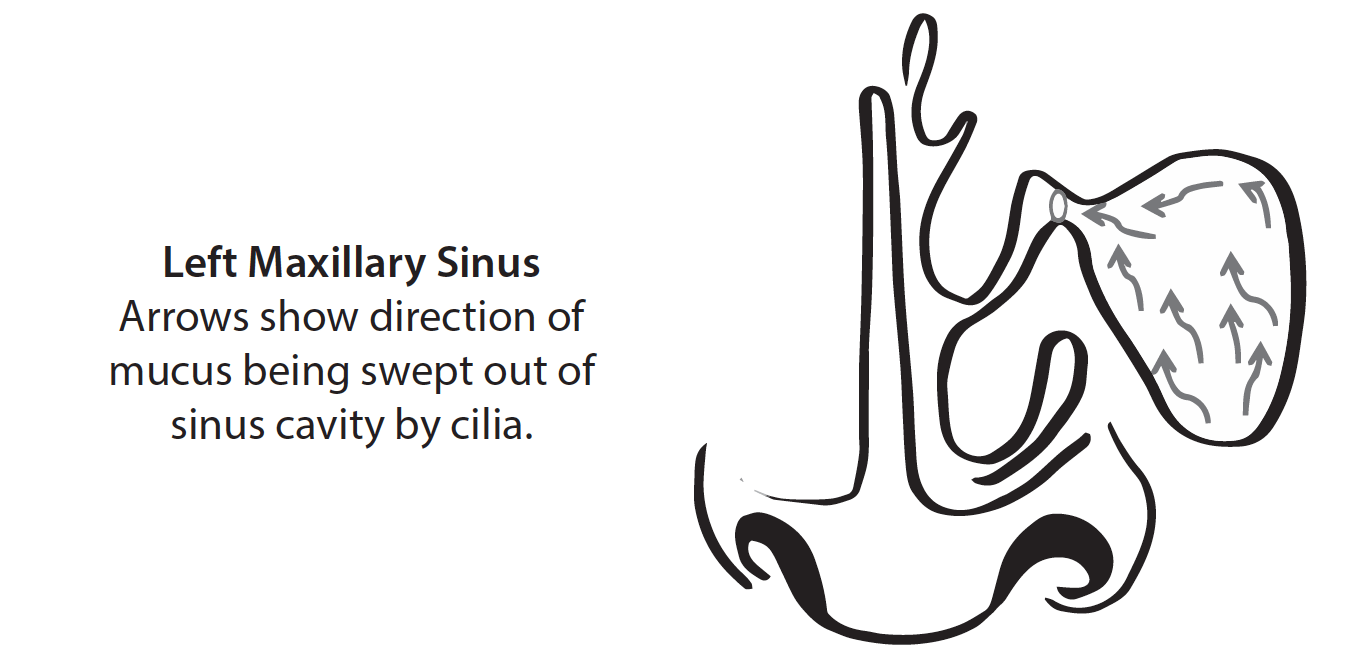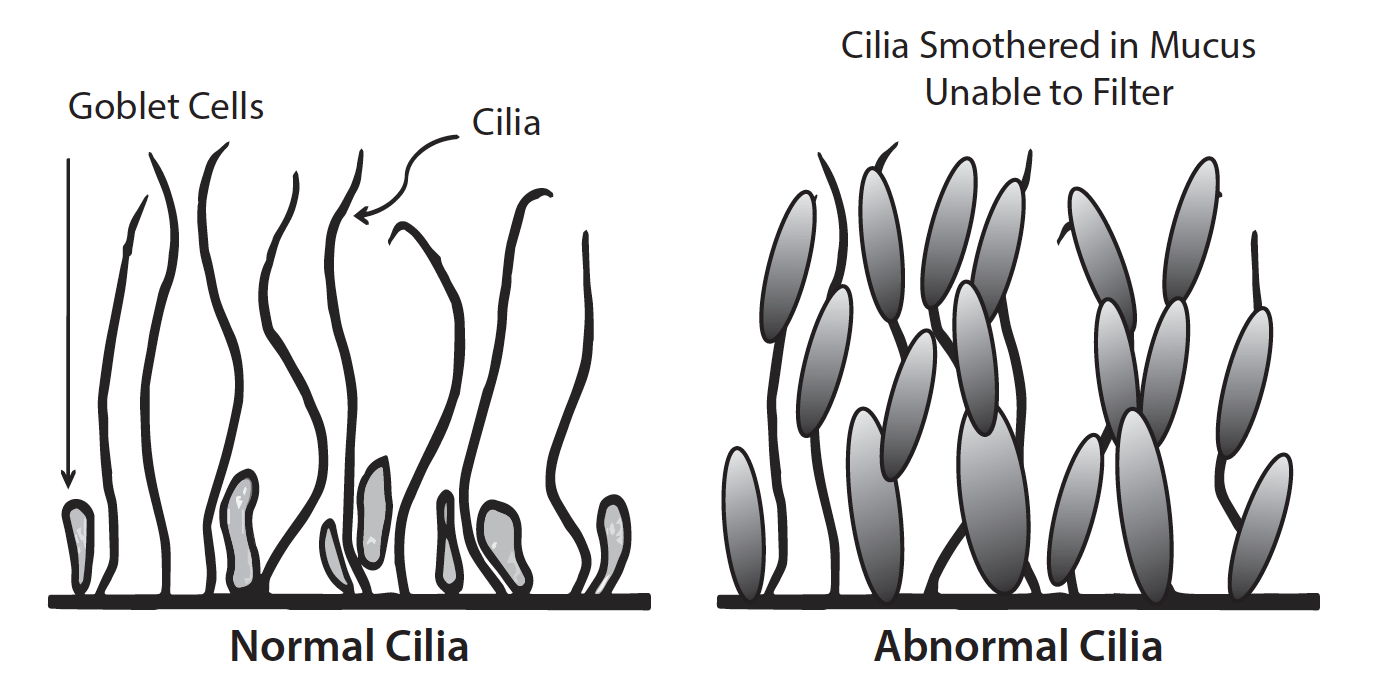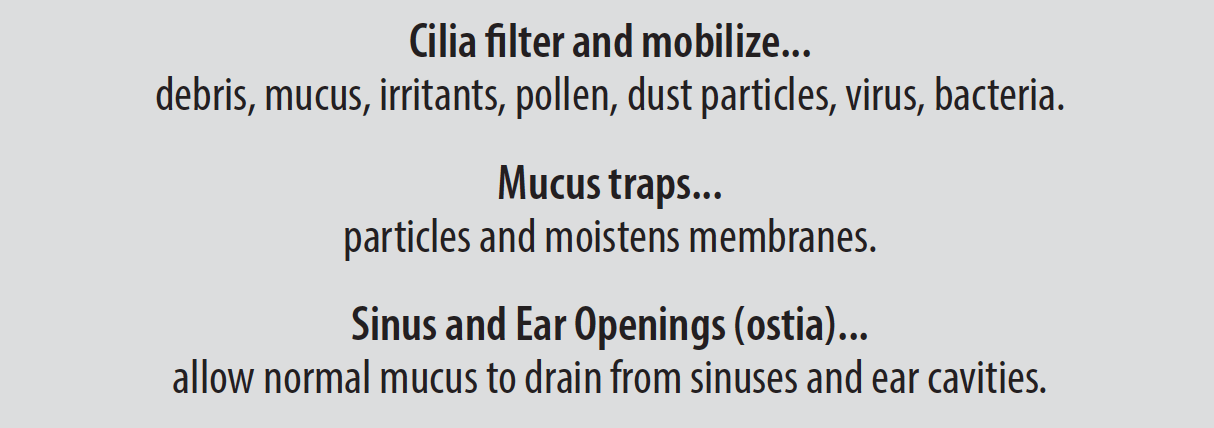
Remember the little hairs (cilia) that blanket the inside of the nose and the sinuses? These are tiny projections that move in a wave-like pattern to transport mucus and all filtered material from the nose. Most mucus and debris is swallowed, spit out, or physically removed by blowing the nose. I like to think of cilia as a broom because they function to sweep the mucus outward. The sinuses in their healthy state are relatively empty, thanks to the mucus’ constant sweeping against gravity. The cilia work in unison to move the mucus through the drainage openings (ostia). The mucus is drained into the nasal cavity, where it then exits out of the nose or onto the back of the throat. When cilia do not function properly due to infection, smoking, or a congenital problem (rare), mucus is not properly cleared. The infection then becomes a self-perpetuating process during which the infected mucus interferes with the cilia’s normal sweeping process, which, in turn, prevents proper clearance of the mucus.


One of the nose’s major tasks is to filter the air before it enters the lungs. Dust, smoke, dander, microorganisms and pollen contaminate the air at times and the small particles are caught by the mucus of the nose. Many of these are quite irritating to the nose. The nose normally protects itself with a mucus blanket that is moved by microscopic hair-tipped cells to the back of the nose where it is swallowed and the stomach juices are fairly effective in destroying these agents. When the nose is inflamed, it is not able to remove the noxious agents. Inflammation worsens the longer these agents remain in the nose. Nasal irrigation with saline is effective in removing these noxious agents. Nasal saline solutions are available to spray as a mist that moisturizes the nose, but I believe that large volume irrigation is required to remove the harmful agents from the nose.
Professor of Otolaryngology
University Of Missouri-Columbia School of Medicine
Retrieved from “Clearing The Air One Nose at a Time: Caring for Your Personal Filter” by Hana R. Solomon MD, 2013″
